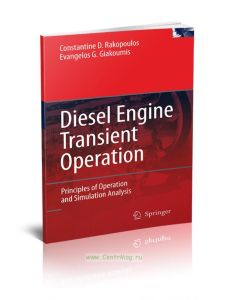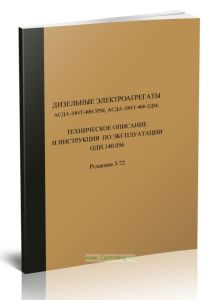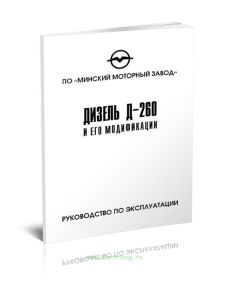- Артикул:00-01023234
- Автор: Constantine D. Rakopoulos, Evangelos G. Giakoumis
- ISBN: 978-1-84882-374-7
- Обложка: Мягкая обложка
- Издательство: Springer (все книги издательства)
- Страниц: 390
- Год: 2009
- Вес: 975 г
Diesel Engine Transient Operation. Principles of Operation and Simulation Analysis/Переходные режимы в дизельном двигателе. Принципы работы и имитационный анализ
Издание на английском языке
This book is the outcome of many years of research on the subject and it is intended to serve as a reference for engineers and researchers but it should also be useful to (post-graduate) students as a supplementary text. It is expected that the reader is already familiar with (basic) aspects of internal combustion engine operation. Consequently, when dealing, for example, with the combustion development during transients, only a brief reminder is provided at the beginning of the section concerning some fundamental features of (steady-state) combustion, Preface VII and afterwards we focus on the discrepancies and special behavior noticed during transients that diversify the operation from steady-state conditions. Wherever possible, we provide experimental results to support our analysis. There are a few points, however, where this was not feasible due to lack of relevant experimental work (e.g., transient operation when the turbocharger compressor experiences surge or crankshaft transient torsional deformation).
Contents
Notation
1 Transient Operation Fundamentals
1.1 Introduction
1.2 Typical Transient Operation Cases
1.2.1 Load Increase (Acceptance) Transient Event
1.2.2 Speed Increase (Acceleration) Transient Event
References
2 Thermodynamic Aspects of Transient Operation
2.1 Turbocharger Lag and Transient Torque Pattern
2.2 Fuel Injection
2.2.1 Mechanical Fuel Injection
2.2.2 Fuel Limiter
2.3 In-cylinder Processes
2.3.1 Heat Transfer
2.3.2 Combustion
2.4 Variable Geometry Turbine
2.5 Exhaust Gas Recirculation
References
3 Dynamics
3.1 Engine Dynamics
3.1.1 Kinematics and Forces of the Slider-crank Mechanism
3.1.2 Crankshaft Torque Balance
3.1.3 Mass Moments of Inertia
3.2 Governor
3.2.1 Governor Fundamentals
3.2.2 Governor Equations
3.3 Friction
3.3.1 Friction Fundamentals
3.3.2 Development of Friction Torque during Transients
3.4 Crankshaft Torsional Deformation
3.5 Introduction to Vehicle Dynamics
3.5.1 Simplified Analysis
3.5.2 Detailed Vehicle Dynamics Study
References
4 Experimental Measurements
4.1 Introduction: Steady-state Test Bed Review
4.2 Transient Experimental Test Bed
4.2.1 Dynamometers
4.2.2 Instantaneous Measurement of Exhaust Gas and Particulate Matter
4.2.3 Heat Release Analysis of Transient Pressure Data
References
5 Emissions
5.1 Particulate Matter and Smoke
5.2 Nitrogen Oxides
5.3 Hydrocarbons
5.4 Carbon Monoxide
5.5 Non-regulated Emissions and Odor
5.6 Biodiesel
5.7 Combustion Noise
References
6 Methods of Improving Transient Response
6.1 Introduction
6.2 Type and Features of Applied Load, and the Effect of Various Dynamic and Thermodynamic Parameters
6.3 Air-injection
6.4 Turbocharger Configuration
6.4.1 Turbocharger Mass Moment of Inertia
6.4.2 Combined Supercharging
6.4.3 Two-stage Turbocharging
6.4.4 Variable Geometry Turbine
6.4.5 Electrically Assisted Turbocharging
6.4.6 Sequential Turbocharging
6.5 Engine Configuration
6.5.1 Fuel Injection Control
6.5.2 Valve Configuration
6.5.3 Manifolds Configuration
6.5.4 Hybrid-electric Engine and Vehicle Operation References
7 Special Cases of Transient Operation
7.1 Cold Starting
7.1.1 Introduction
7.1.2 Combustion Instability
7.1.3 Dynamics and Friction Development
7.1.4 Exhaust Emissions
7.2 Compressor Surge
7.2.1 Surge Fundamentals
7.2.2 Compressor Surge during Diesel Engine Transient Operation
7.3 Low-heat Rejection Operation
7.3.1 Load or Speed Increase Transients
7.3.2 Short Term Temperature Oscillations
References
8 Second-law Analysis
8.1 Introduction
8.2 Basic Concepts of Availability
8.2.1 Availability of a System
8.2.2 Dead State
8.2.3 General Availability Balance Equation
8.2.4 Fuel Availability
8.3 Application of Exergy Balance to the Diesel Engine
8.3.1 Engine Cylinder Exergy Balance
8.3.2 In-cylinder Irreversibilities
8.3.3 Exergy Balance of the Engine Sub-systems
8.3.4 Second law or Exergy or Exergetic Efficiency
8.4 Exergy Balance Application to Steady-state Operation
8.5 Exergy Balance Application to Transient Operation
References
9 Modeling
9.1 Introduction
9.2 Quasi-linear or Mean Value Approach
9.2.1 Engine Output
9.2.2 Exhaust Gas Temperature
9.2.3 Engine Air-flow
9.2.4 Transient Discrepancies
9.3 Filling and Emptying Approach
9.3.1 Thermodynamics Fundamentals
9.3.2 In-cylinder Calculations
9.4 Manifolds
9.5 Multi-cylinder Engine Transient Operation
9.6 Turbocharger
9.7 Friction
9.7.1 Mean fmep Method
9.7.2 Rezeka–Henein Model
9.7.3 Account for Transient Discrepancies
9.8 Fuel Injection
9.9 Mechanical Governor
9.10 Crankshaft Torque Balance
9.11 Exhaust Emissions
9.11.1 Global Approximations
9.11.2 Nitric Oxide Formation Model
9.11.3 Soot Formation Model
9.12 Solution of Equations
9.13 Sensitivity Analysis
References
Appendix A – Exhaust Emission Regulations and Transient Cycles
A.1 Introduction
A.2 European Union (EU)
A.2.1 Emission Standards
A.2.2 Transient Cycles
A.3 United States of America
A.3.1 Emission Standards
A.3.2 Transient Cycles
A.4 Japan
A.4.1 Emission Standards
A.4.2 Transient Cycles
A.5 Overall: Comparative Data
A.6 Worldwide Heavy-duty Transient Cycle
References
Appendix B – Fundamentals of Control Theory
Index
Рекомендуем
Артикул 00-00000310




